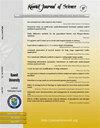单峰骆驼毛形变异候选基因KRT71的测序
IF 1.1
4区 综合性期刊
Q3 MULTIDISCIPLINARY SCIENCES
引用次数: 0
摘要
不同种类的哺乳动物在毛发形状上表现出明显的差异。角蛋白71 (KRT71)基因的遗传变异与多个物种的卷发有关,使其成为研究单峰骆驼等未充分研究物种的头发形状的合适候选者。最近在单峰骆驼身上发现了毛发的特征,并将其分为五类:直型、c型、波浪型、环状和弯曲型。本研究的目的是:(1)利用一组不同毛型的单峰骆驼对KRT71基因的编码区(即外显子和内含子剪接区)进行测序,(2)鉴定多态性,(3)检验鉴定的多态性与毛型之间的关系。研究人员收集了102种不同阿拉伯半岛骆驼的尾毛样本,并提取了它们的DNA。对每只骆驼进行多重PCR扩增KRT71基因的编码区和内含子剪接区,然后对PCR产物进行Sanger测序。通过对102头骆驼样本的序列比对,发现了17个多态性,其中5个位于编码区。虽然这些多态性中的一些引起了氨基酸的改变,但它们都不能完全解释单峰骆驼不同的毛发形状类别。然而,鉴定出的变异可能起作用,并与其他基因的变异相互作用,以控制头发的形状。本研究首次对单峰骆驼的毛型遗传学进行了研究,为今后的选择性繁育提供了依据。本文章由计算机程序翻译,如有差异,请以英文原文为准。
Sequencing KRT71 as a candidate gene for hair shape variation in dromedary camels
Mammalian breeds within different species display a distinct variation in hair shape. Genetic variants within the Keratin 71 (KRT71) gene were linked to curly hair in multiple species, making it a suitable candidate for investigating hair shape in under-studied species like the dromedary camel. Hair shape has been recently characterized in dromedary camels and classified into five categories: straight, C-shaped, wavy, ringed, and kinky. The objective of this study was to (1) sequence the coding regions of KRT71 gene (i.e., exons and intronic splicing regions) using a group of dromedary camels of different hair shapes, (2) identify polymorphisms, and (3) examine the relationship between the identified polymorphisms and hair shape. Tail-hair samples were collected from 102 different Arabian Peninsula camel-types and their DNA was extracted. For each individual camel, the coding and intronic splice regions of the KRT71 gene were amplified using multiple PCR reactions and the PCR products were then Sanger sequenced. The alignment of the generated sequences across the sampled 102 camels revealed a total of seventeen polymorphisms, five of which were in the coding region. Although some of these polymorphisms caused amino acid alterations, none of them fully explained the different hair shape categories in the dromedary camel. However, the identified variants may work and interact with variants in other genes to control hair shape. This study is the first to investigate hair shape genetics in dromedary camels, providing the basis for future selective breeding programs.
求助全文
通过发布文献求助,成功后即可免费获取论文全文。
去求助
来源期刊

Kuwait Journal of Science
MULTIDISCIPLINARY SCIENCES-
CiteScore
1.60
自引率
28.60%
发文量
132
期刊介绍:
Kuwait Journal of Science (KJS) is indexed and abstracted by major publishing houses such as Chemical Abstract, Science Citation Index, Current contents, Mathematics Abstract, Micribiological Abstracts etc. KJS publishes peer-review articles in various fields of Science including Mathematics, Computer Science, Physics, Statistics, Biology, Chemistry and Earth & Environmental Sciences. In addition, it also aims to bring the results of scientific research carried out under a variety of intellectual traditions and organizations to the attention of specialized scholarly readership. As such, the publisher expects the submission of original manuscripts which contain analysis and solutions about important theoretical, empirical and normative issues.
 求助内容:
求助内容: 应助结果提醒方式:
应助结果提醒方式:


